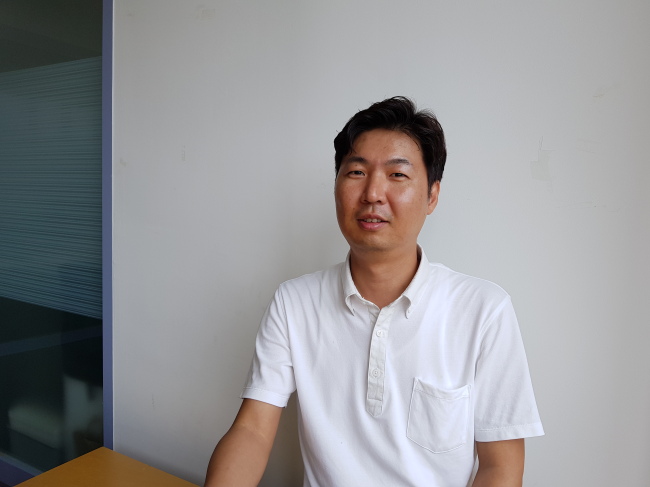The Korea Herald is publishing a series of interviews with experts in the intellectual property sector. This is the 21st installment. -- Ed.
In contrast to copyright, which is recognized as a tangible and exclusive protection for creators, the notion of public domain -- where works are shared freely without intellectual property ownership restrictions -- is often dismissed as a cost-free, and therefore less valuable, source of knowledge.
A challenge for the modern world, however, is that demand is rising to alleviate the conventional concept of copyright and expand the range of such public domain, or intellectual commons, given the accelerating pace of innovation and interconnectedness across sectors.
A conciliatory solution, according to an expert in music copyright, would be to motivate creators to commit to the public domain by implementing a compensation system based on blockchain technology.
“Despite the widespread preconception, creators are willing to accept various forms of rights other than just copyright,” Jang Sung-wook, CEO of music service provider SounDUX, told The Korea Herald in an interview.
“The problem is that the current public domain system has little to offer to creators in exchange to their contribution.”
 |
Jang Sung-wook, CEO of royalty-free music platform SounDUX. (Bae Hyun-jung/The Korea Herald) |
SounDUX is a license-free open market platform specializing in background music and sound effects. As composers are entitled to decide the price and range of use for their works, users may purchase music and freely use it as needed without worrying about copyright issues.
Jang was a speaker on the related issue at the 2018 Public Domain and Open Source Conference, an event held in June by the Ministry of Culture, Sport and Tourism and the Korea Copyright Commission.
The public domain consists of all creative works to which no exclusive intellectual property rights are attached, mostly due to the expiration or waiver of rights.
An example of such a platform here is Shared Yard, or Gong-u-madang in Korean, a website run by the KCC to compile and share IP-free literary or art works. The leverage of this government-led database, however, has remained limited due to low public awareness and the lack of budget.
The most effective way to expand common intellectual resources, as it is in most other sectors, is to turn to the market logic and involve private players through rewards, according to Jang.
“There is an increasing awareness on the need for some form of compensation in the public domain, but no consensus has been reached on its form or range,” Jang explained, citing a survey he had conducted earlier this year on the subject.
Of the 150 respondents, 83 percent agreed that compensation is needed for shared works, but also 83 percent suggested that the amount should be limited to 30 percent of that of copyrighted works, while only 14 percent consented to 50 percent or more.
“Here is the dilemma. Compensation is considered crucial in order to encourage high-quality content providers to participate in the platform but users are unwilling to pay out of their own pocket,” the music platform operator said.
“The blockchain technology could address this problem, awarding platform participants with coins and allowing users to express their commitment to designated content without paying actual cash.”
While further details are yet to be figured out, the essence of the suggestion is that creators are to be rewarded with coins and the influx of users is to raise the value of the platform, which will consequently boost the market value of the given coins, he explained.
Such business model has turned out effective in the case of Steemit, a social media platform that uses its blockchain-based rewards for publishers. Its cryptocurrency token Steem reached $475 million in market capitalization as of the end of last year, which was less than two years from the business launching.
Another valid reference is Ujo Music, an open source music platform that uses an Ethereum-based payment system in an effort to create an independent ecosystem for creators.
Jang asserted that a decentralized digital environment and rewarding mechanism may create a new platform model that bridges the current exclusive copyright sector and the completely free-of-charge public domain.
“Also, blockchain is marked for its P2P (peer-to-peer) transaction mechanism which allows parties to trade assets directly without central coordination,” Jang added.
“Such feature may be ideal especially in the case of the music industry, in which the rights of actual creators are often misrepresented by other stakeholders and giant market platforms.”
The idea of applying blockchain technology to public intellectual domain may yet be premature, especially in South Korea where excessive regulations are often pointed out as market disincentive, Jang admitted.
“Experts agree that a blockchain approach is indispensable in content platform innovation, but the speed and direction of forthcoming changes will almost entirely depend on the policy moves down the road,” he said.
One of the major challenges is the tax issue as the South Korean government still remains reserved on how to tax the profits made from cryptocurrency margins, he added.
By Bae Hyun-jung (
tellme@heraldcorp.com)







![[Today’s K-pop] Blackpink’s Jennie, Lisa invited to Coachella as solo acts](http://res.heraldm.com/phpwas/restmb_idxmake.php?idx=644&simg=/content/image/2024/11/21/20241121050099_0.jpg)
